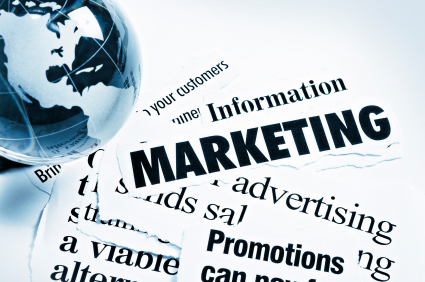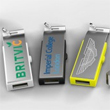25 Marketing Tips For A Successful Product Launch
 According to Cincinnati based research agency AcuPoll, as many as 95% of new products launched each year fail. Why does this happen? Maybe, businesses don’t reach early adopters soon enough, or their promotional marketing programs don’t support their product introductions. Today, consumers get information from multiple sources; this requires multiple marketing channels to ensure the success of your launch. Take a look at some of the approaches you can use when launching your new product.
According to Cincinnati based research agency AcuPoll, as many as 95% of new products launched each year fail. Why does this happen? Maybe, businesses don’t reach early adopters soon enough, or their promotional marketing programs don’t support their product introductions. Today, consumers get information from multiple sources; this requires multiple marketing channels to ensure the success of your launch. Take a look at some of the approaches you can use when launching your new product.
Advertising
Traditional advertising is an effective way to communicate your new product or service to your target audience. These are proven methods. Don’t discount them; ignoring them can lead to wasted opportunities.
Television
With almost 99% of US households owning a television, advertising on TV is among the most effective ways to reach your target audience. This form of advertising is very powerful because it helps your new product gain instant credibility and puts you in the same realm as large companies in the mind of consumers.
TV advertising that drives a new product introduction will shorten the time it takes for your product to become a hit. How does this happen? The combination of the visual and audio sparks the viewers’ emotions, helping them to identify with your new product. If prospects can identify with a product, they’re more likely to ask for it.
Radio
Radio allows you to reach 93% of your local consumers every week, making it the most dominant out-of-home media in the US. It reaches targets when they have less to distract them, so the percentage of people who are actively paying attention to your ad is the highest of any mass media. This makes radio perfect for your product launch. You’re reaching a large segment of your audience at a point when they’re highly engaged in what you have to say. You can’t ask for a better way to explain your product while raising customer awareness.
Newspaper
As one of the oldest forms of mass media, newspaper advertising remains a viable option. If gearing your new product to a more general market, newspapers are worth considering, due to the fact that they are consumed by nearly all segments of the population.
Newspapers are quick. Placing an ad on Monday means getting results by the end of the week. People also expect to find ads in their newspapers; they often buy them just to read the ads. You can expect quick results from people predisposed to looking for advertising. It’s a win-win situation.
Magazine
There are a number of appealing facets to advertising your launch in a magazine. First, print ads can be referred to over and over. People hang on to magazines for months, sometimes years after they’ve been published. This places your product in front of them for a long time. Second, magazine readers tend to be part of a better educated audience, making them more open to new ideas or products. Finally, magazines are highly segmented in their readership. They already target a very specific market, making it easy to line your market up with theirs.
Trade Publications
In the business-to-business world, there is almost nothing better than getting your message out in your target audience’s trade publication. These publications are really targeted to particular industries and sometimes even segments of an industry. They’re usually only of interest to people who are truly, fanatically obsessed with that particular field; these tend to be early adopters who are constantly up-to-date on the latest trends.
Outdoor
By reaching people where they drive, live, work and play, you can deliver your new product in an inescapable way. According to the Advertising Specialty Institute (ASI) Impression Study, the cost per impression rate of outdoor advertising is also the lowest in the industry at $0.003, making it a great value. Outdoor media forces consumers to notice your new product; you control the ad space. They can’t change the channel, go to a different website or turn the page. They have almost no choice but to take notice.
Online Efforts
Your Website
Before you consider expanding into other areas of online marketing, you need a website or blog that can act as your home base. Aside from containing useful information about your company, your site needs to contain information about your new product. Feature it on the homepage of your site and create a product specific landing page that features photos, videos, product descriptions and other content you want to share.
Landing Pages
A landing page is the first page on your site that a visitor will see, even before they reach your homepage. A person can reach it by entering a URL or by clicking a link from an e-mail or another website. There are many techniques to attract people to your landing page, including search engine optimization, social media, advertising, email, etc. But remember, the most important objective of your landing page is to convert visitors in line with your goals. If your landing page is a product page and your goal is to get a user to order, your landing page is a success when they add the product to their cart. Be sure to interlink the landing page with the rest of your site. Lastly, pay attention to the analytics and never stop optimizing the page.
Online Advertising
Pay-per-click marketing services from Google, Yahoo and Bing can boost awareness of your new product launch and put you in front of a very targeted audience. Research the most widely read blogs and websites in your target market, and purchase banner advertising there.
Social Networking
Facebook, Twitter and YouTube can all be used as a great way to inform current customers and contacts about your new product. But don’t think you can just throw the same content on any network. Adjust your messages appropriately for your audience. Also, don’t just make one post and walk away. You need to continue to manage and communicate with your followers in order to build relationships. If you provide them with valuable content, it will eventually lead to sales.
Email Blasts
This is one or more mass marketed email messages that target your mailing list. It’s a great way to provide content to people you already have a relationship with. You can offer a sneak peak of your never-before-seen product, pre-orders, or other exclusive content. Send messages on a regular schedule to keep your product or service in the minds of your contacts.
Online Retail Sites
Partnering with well-respected sites will improve the profile of your new product. Placing your product on Amazon, eBay or Google Product Search puts it in front of people who are already inclined to buy.
Outreach
Provide samples to key members of your industry. By placing your new product in the hands of those who can influence others by means of a product review, you can expand your reach. Consider targeting the following:
- Bloggers – Approach those in your industry who have active communities and high traffic/subscriber numbers. Be familiar with their blogs, audience and content before providing them with any information about your product. It’s important to treat them the same way you would traditional journalists.
- Social Media Influencers – Determine the most active social media users in your target market and begin to create a relationship with them. This may take time, and you might not see quick results. However, the feedback they offer is priceless. So is the influence that they have over their audience.
Promotional Literature
Without the proper promotional literature in place to support your launch, your business is going to struggle to capitalize on any interest that is shown to your product. Want a new acquaintance to stay aware of your product launch? If you haven’t given them promotional literature, they’re likely to forget about you. Or even worse, they may remember that they were very interested, but didn’t have a chance to investigate further. And now they forget your company name. Good luck trying to convert that sale.
Promotional Products
Promotional items are an excellent way to advertise your new product, they have many advantages that other marketing ideas can’t compete with.
- They have a long shelf life. Other forms of marketing and advertising don’t create something that makes people remember your new product, much less motivate them to go out and buy your product. Promotional products ensure that your product launch is memorable because they stick around. They become items that people live with. The cost per impression rate of promotional products is extremely low, at an average of $0.004, according to a ASI Impression Study.
- There’s always at least one promotional item that will relate to your new product. The variety is massive. Your promotional item can reflect or call to mind a specific feature of your new product. Even if you can’t find something that relates directly, you could always create a miniature replica of your product and attach it to key chains, pens, or other items. Your promotional item raises awareness for your new product and build anticipation for its launch.
Direct Mail
When launching your new product, you need people to act. Direct mail is a straightforward way to get action on the part of consumers. It lets you target prospects very precisely and gets your marketing campaign moving quickly, sometimes in the span of a few days. Sales letters, self-mailers, statement stuffers, postcards and CD mailers all give you different avenues through which to target prospects depending on your product or budget.
Press Kits
Journalists, bloggers, reporters and news editors all get press releases for new products all the time. Press kits take it a step further. By providing journalists with a greater amount of information, there’s a better chance they’ll cover your item. This in turn gives your product even more attention.
Your press kit is a valuable public relations tool that can be handed out in both print and electronic versions. They can also be used for conferences and trade shows. Here, they can inform and educate the media about your new product. Depending on your item, it can be less educational and more creative or vice versa.
Trade Shows
An industry trade show can be one of the best places to launch a new product. Most companies know this, which can lead to a lot of competition. They’re a natural gathering of your audience ready to listen to your pitch, and are a proven method for finding business and making new connections. There can be a lot of work involved in the planning of your trade show product launch, but they’re an excellent way to create anticipation and build excitement for your new product.
Conferences
Businesses choose to launch their new products during conferences and association meetings because they give you exposure for your business. By placing you in front of journalists and other industry insiders, they’re an opportunity to introduce or reintroduce people to your company. They’re typically held at traditional meeting spaces like conference centers or hotels, and can also work in conjunction with major trade shows or industry conventions. The downside is there can be many other companies in your same position. Their products could be better than yours, or worse. Either way, a good idea could get lost in the shuffle. On the other hand, the majority of attendees probably don’t know you or your business, so you can get unfiltered responses to how your product is really perceived.
Networking Group
By meeting with other business people in the community, you can get in front of those who might otherwise not have been aware of your new product. They give you the opportunity to get an outside opinion. Group members won’t necessarily be a part of your target audience so you get a different viewpoint. Most groups only allow one industry representative per chapter (i.e. lawyer, doctor, accountant), which gives you the maximum benefit from your membership. You’re the only one representing your industry. This not only increases the strength of the group, but it promotes an exclusive audience for your new product with little to no competition.
Seminars
Launching your new product or service at a seminar is a time efficient way to get it in front of as many clients as possible. A seminar allows you to build a case and vision for your product while you’re educating clients about it. It gives you a solid foundation from which to talk about your new product, while allowing smaller companies to appear larger than they really are. Invite journalists as well as your target clients and make sure you set goals for the seminar. One possible goal could be using it to get 25 follow up sales meetings.
Think carefully about your venue. The location says a lot about the market position of your company. If your audience isn’t upscale, you don’t need an upscale venue. Also, think about catering your event. This gives staff time to network with potential clients, and shows how professional you can be.
The seminar for a new product launch should be an hour and a half at most. Make it as interactive and fun as possible. Pass out promotional products and literature on the new product so that prospects have something they can take home with them. Use name tags. This helps you remember the names of people you might have forgotten, and the tags left over tell you who didn’t show. Have attendees fill out contact sheets so that you can be sure exactly who was there. Include a name, phone number, job title, email address and any other desired info. Also include a box they can check to be added to your mailing list.
Before you even have the seminar, you need to be prepared to follow up. Always make sure that you have the time and manpower to fulfill your follow up activities. It can be as simple as sending out a short thank you email or a follow up appointment request.
New Product Packaging
The way you package your new product matters. You want to get your launch off on the right foot by exceeding customer expectations, starting with their first impression of the product. Creating a unique package design provides your new product with a lasting brand identity. Think about the retail space. Use your packaging to further differentiate your product from the competition. Good packaging could be what attracts your customers to the product in the first place. If your customer hasn’t seen any advertising about the product, this could be your only opportunity to connect with them.
Guerrilla Marketing
Instead of relying on a large budget, guerrilla marketing uses time, energy and imagination to get attention for your product. Your campaign should be unexpected and interactive in order to generate a positive buzz for your business. Use guerrilla marketing to get extra attention in a public place or at an event. Have someone dress up as your new product and mingle through the crowd passing out promotional items. It’s a unique way to stand out and be memorable.
Posted in Marketing, Product Launch Marketing
Don`t neglect your friends, share this right away.





Looking for a new advertising agency or marketing firm to assist us with a new product launch, plus other services.
This resource might help you out: http://www.thecreativeham.com/the-list.php